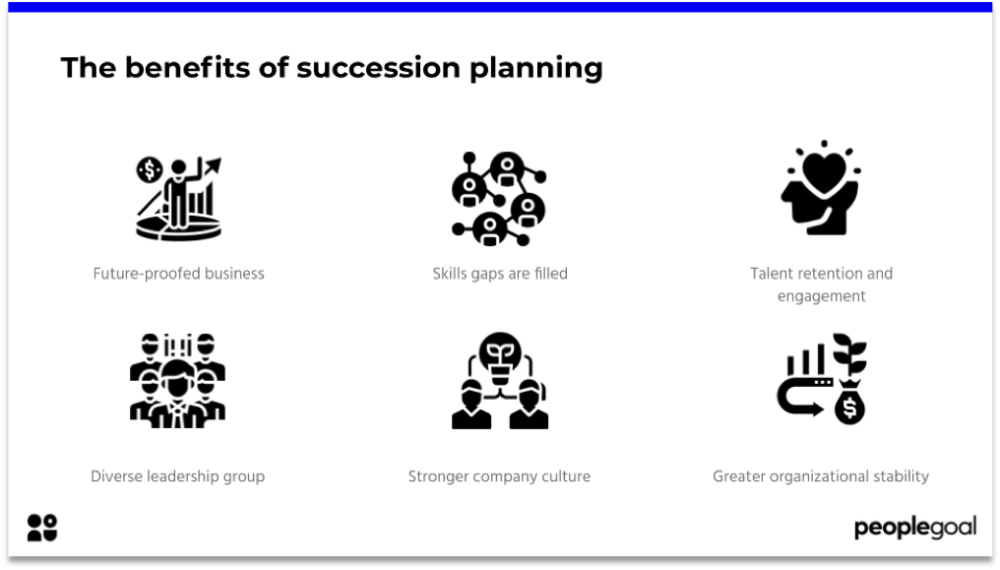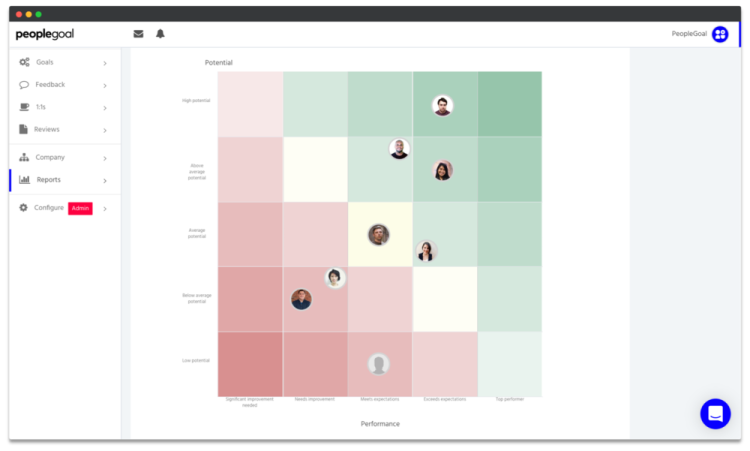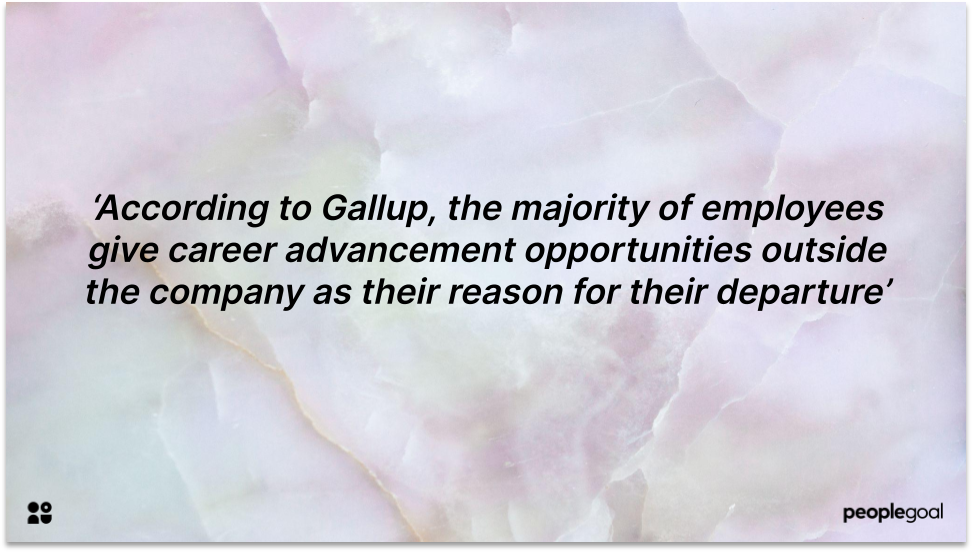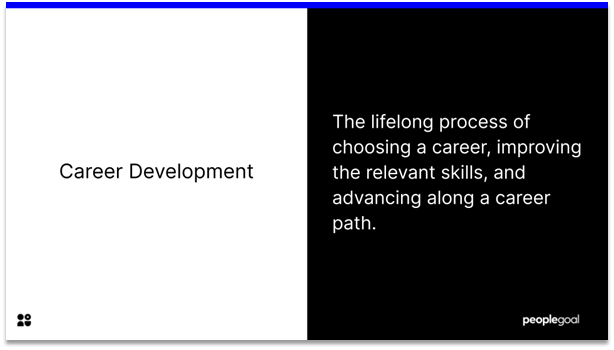Succession planning is all about future-proofing your business. You need to identify and develop your internal talent to fill both the existing critical roles in your company and the new roles that will be required as you grow. However, effective succession planning is one of those areas that everybody knows is important but which very few organizations actually implement. Partly because as a growing business it’s hard to engage committed and driven leaders to consider their replacements, and partly because the succession planning process can feel far more complicated than it really is.
With a good succession planning template in place that simply assesses a few key development areas, you can easily run regular succession evaluations to ensure you’re on track with developing your top talent and planning for the future of your business. Addressing this in a data-driven but empathetic way should include both the current position holder and the internal candidates for succession that will help to create an objective plan for the future of your business.
Download the Succession Planning Template in Google Sheets and Excel here.

This template is designed to help you identify and assess high-potential employees in order to fill important leadership roles in the future. You’ll need to find the key competencies required for each business-critical role, and analyze both the performance and potential of the nominated candidates for each role. Once you’re done, you should create action plans for your internal talent to develop their skills.
Why should you create a succession planning template?
A detailed study by Deloitte found that “while 86 percent of leaders believe leadership succession planning is an “urgent” or “important” priority, only 14 percent believe they do it well.”
If a critical role in your company is vacated, you need to be prepared. Keeping your business running in the face of unforeseen challenges is the most important reason, but succession planning is also about identifying company-wide skills shortages that could be holding back overall organizational growth.
In preparing for the future of your company it’s far more beneficial to identify and develop your internal talent than to constantly bring in outside hires — which is an expensive process, not to mention the time it takes for a new starter to find their feet in a fast moving company. Succession planning is about finding employees with high potential who, with the right coaching, could be perfect for leadership roles in 1, 3 or 5 years.
The benefits of succession planning
- Talent retention: engaging your top performers with a plan for their future at your organization, and offering the training and development they need to build their knowledge, experience and leadership skills, means they’re less likely to get snapped up by other businesses who recognize their potential.
- Future-proofed business: ensuring that you’re filling current and future vacancies with the right people in the right role, and that you’re prepared for unexpected losses of leadership.
- Skills gaps are filled: developing your internal talent builds critical organizational skills and keeps that expertise in-house.
- A more diverse leadership group: being data-driven about your succession planning means you’re likely to identify leadership candidates who you may not have considered by relying just on “gut feel” or those who’ve been with the company the longest.
- Stronger company culture: you’ve got more leverage to build a leadership team of engaged, motivated employees who know your ways of working and embody the company culture.
- Greater organizational stability: you’re better prepared for an emergency situation which fosters confidence in your company’s ability to weather unexpected changes.

The succession planning process
There are three stages to succession planning:
- Identify the business-critical roles that you’ll need to replace in the future, or fill as your business grows.
- Assess employees on their competencies and skills, their performance and their potential.
- Coach and develop high-potential employees to fill the business-critical roles in 1, 3 or 5 years.
1. Identify business-critical roles
Make a list of the key positions that are critical for your business to operate effectively. It’s a good exercise to engage your senior leadership team in this process, and to tie succession planning into the overall strategic organizational planning. Define where you want your company to go in the future and what roles will drive this growth.
For each business-critical role, define the skills and competencies required to thrive in this position. This will become the basis for your talent assessment and the development areas to train individuals in to take over this role.
2. Assess employees’ competencies and skills
As part of your continuous performance management process, you should be regularly assessing all employees’ skills, demonstration of competencies and overall performance through 360-degree feedback, employee/manager one to one meetings and performance reviews. For your succession planning process, you’ll also need to evaluate their potential in the key competency areas of your business-critical roles.
“We found few organizations that were combining a disciplined, data-driven process with a user-friendly, people-centric approach that adequately engages stakeholders. Many organizations can still default to subjective or political succession decisions based on factors such as likability, sponsorship, or tenure.” – Deloitte Insights
The easiest way to do this is by using ratings (typically 1-3, but 1-5 is also effective). For each competency, rate every employee on their performance of the competency as well as their future potential in this area. Feed these into an overall performance vs. potential score, and plot the full organization along a 9-box (or 25-box!) chart. You can create charts for each business-critical role, and use totals for one overall organizational chart. The 9-box assessment is typically done by senior leadership in partnership with Human Resources, but a powerful extra step is to build potential assessments in to your 360-degree feedback.
PeopleGoal’s 360 degree feedback grid gathers ratings for employees’ performance and potential from a wide range of participants – colleagues, supervisors, leadership and clients – and automatically plots your employees on the chart to easily identify high potential candidates based on a holistic view of their performance.

Asking for evaluations from not just line managers delivers a less biased, more holistic evaluation of potential leadership candidates that takes into account their ability to collaborate across business areas. The outcome of the 9-box exercise is that employees in the top-right are your high potential leadership candidates. Map out how their current skills match up to the business-critical roles, and draw out the areas for development they need to be ready to fill a role. Indicate the time-frame for succession, and whether they’ll be ready to move up – generally immediately, in 1-2 or 3-5 years’ time.
3. Develop your high-potential talent
Each potential candidate should now create a development plan to get the training and coaching to build their skills and experience for progression. It’s important to involve the employees themselves in this process, to discuss the future they see for themselves in your organization and to develop innovative self-leaders.
For candidates on a longer development timeline, you should also consider lateral moves within the business to broaden employees’ skillset and give them more exposure to other areas of operation. This is especially important for employees who may be ready for promotion immediately, but no position is available. You need to recognise their leadership potential and keep them engaged to ensure they’re not poached by other companies.
The process of succession planning can seem daunting at first, but really it’s just taking a data-driven approach to employee assessment that feeds into many other areas of talent management: monitoring performance, boosting employee engagement and planning for the future. A simple succession planning template will give you a place to start with these evaluations and make sure you’re prepared for any change to your organization when it happens.
Ready to 3x Your Teams' Performance?
Use the best performance management software to align goals, track progress, and boost employee engagement.





